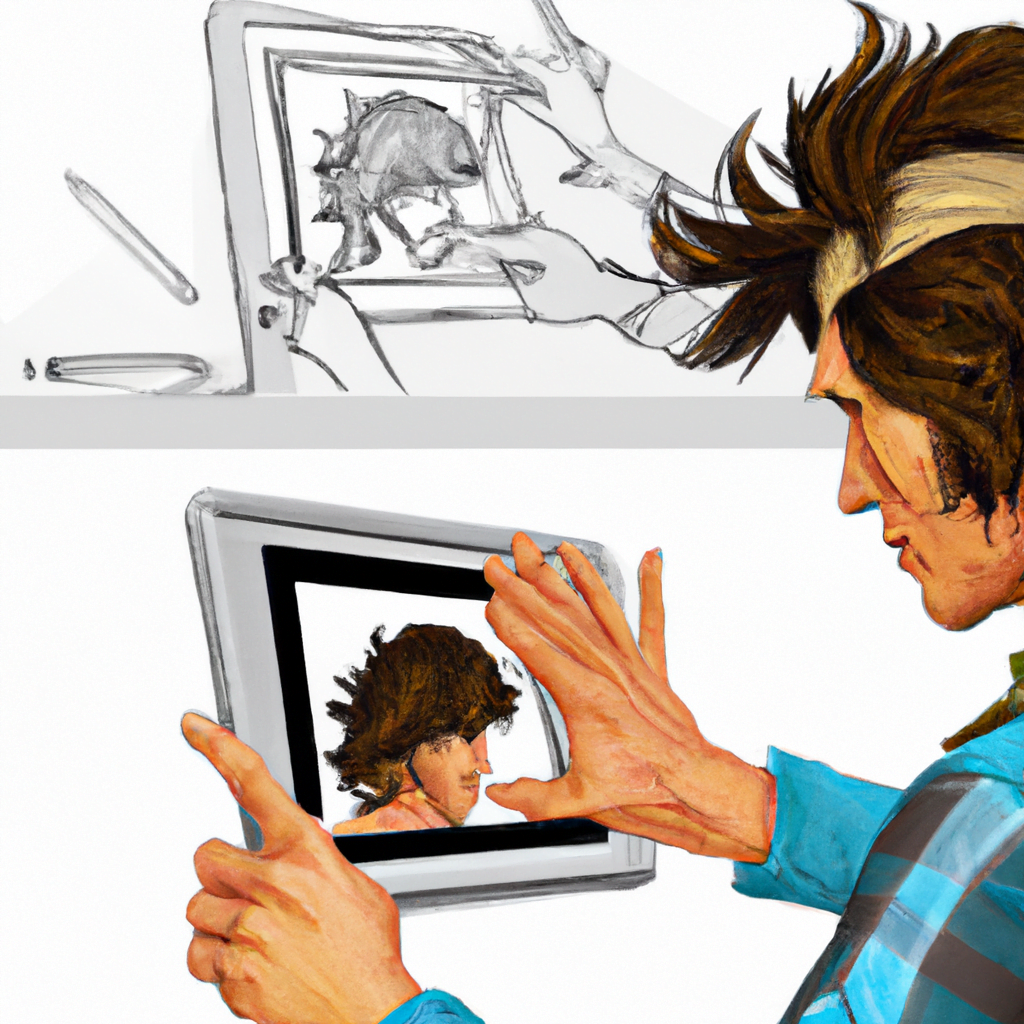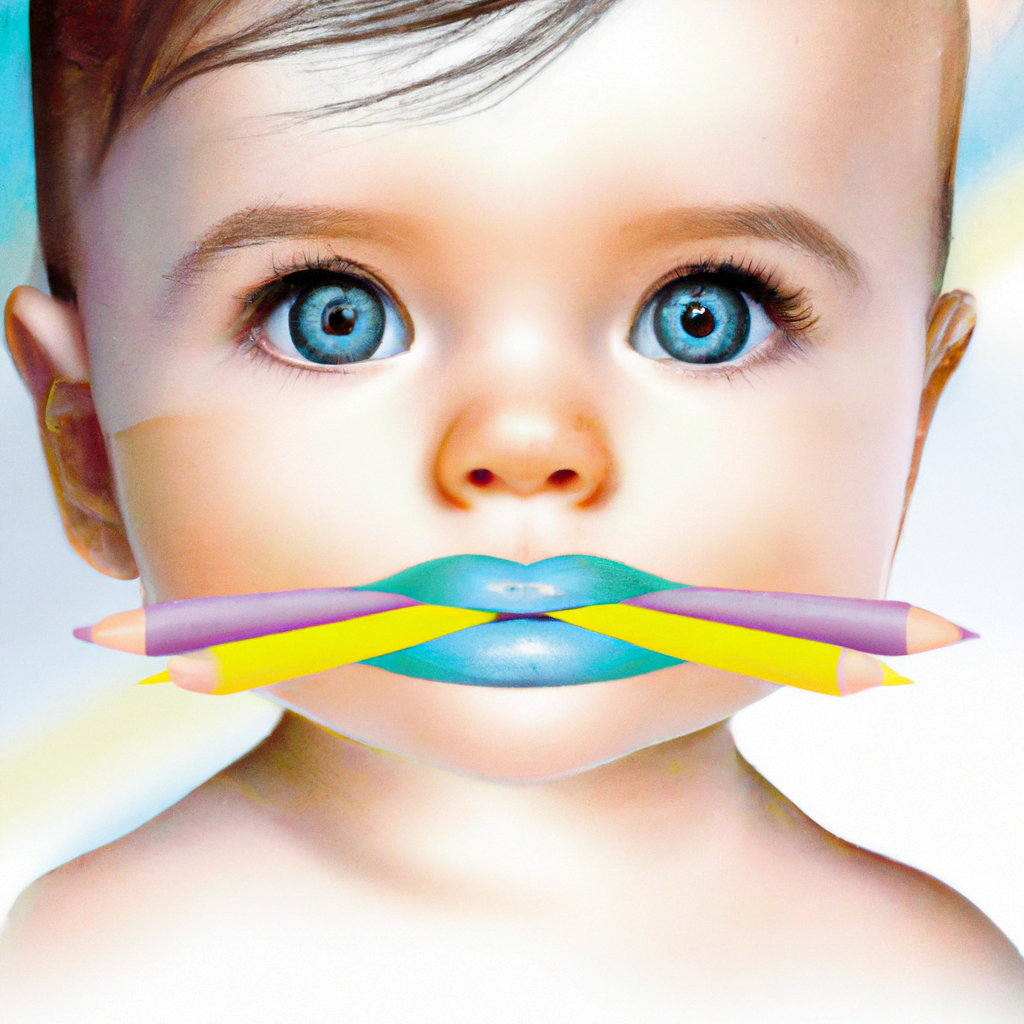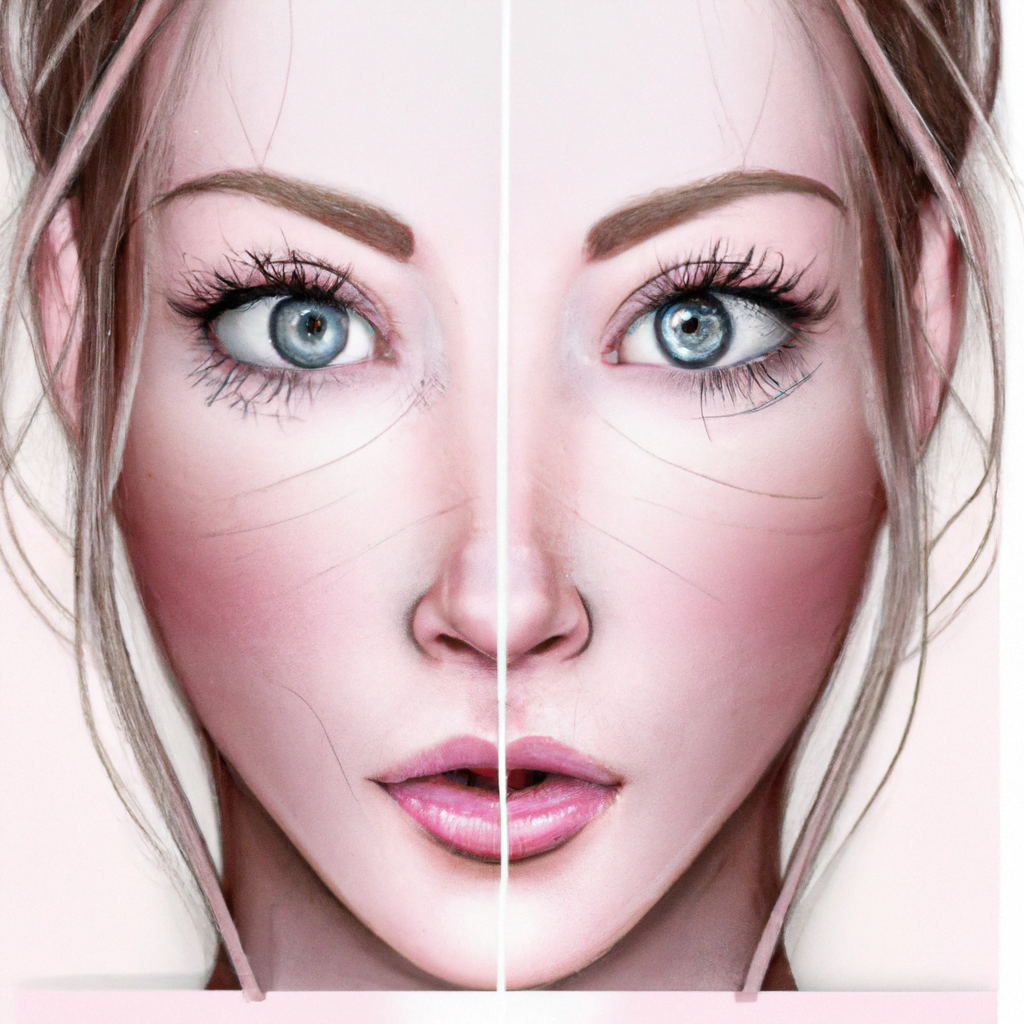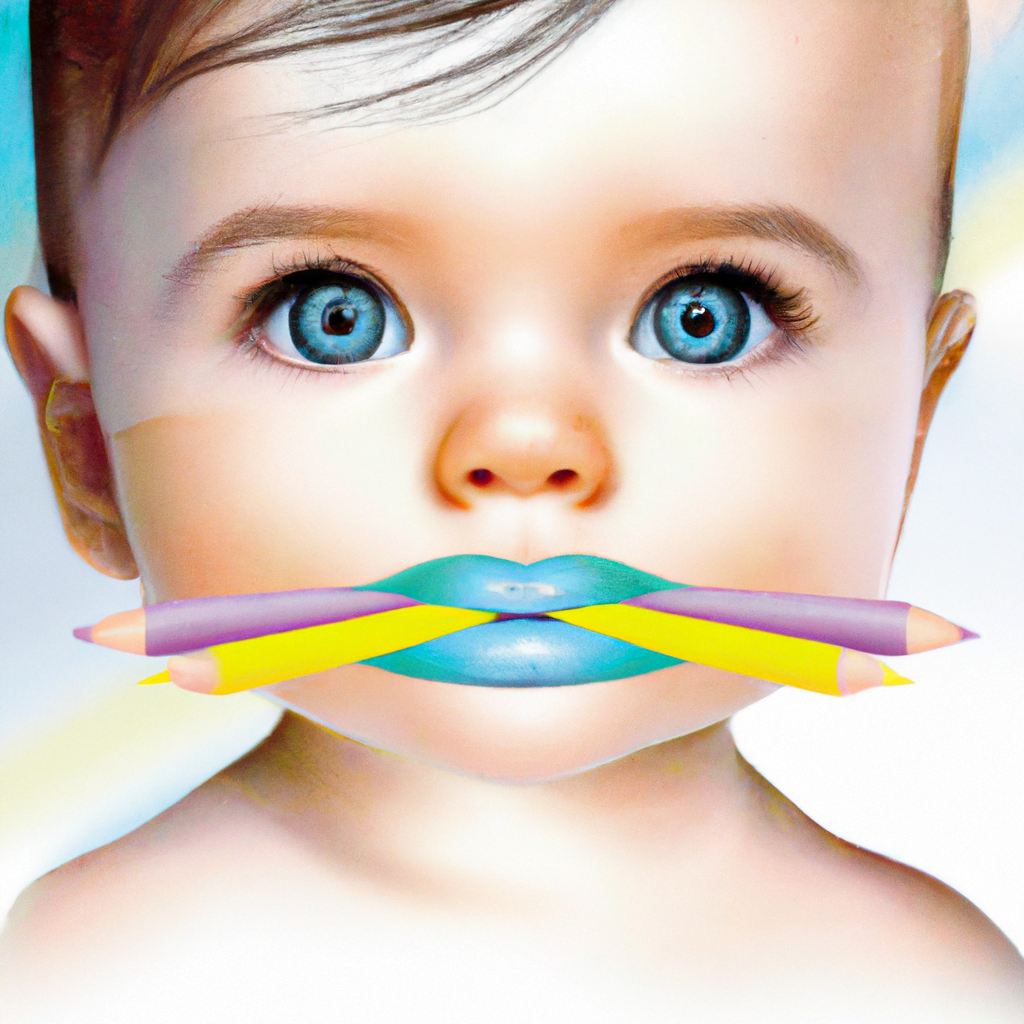If you’ve ever wanted to bring your drawings to life and create detailed and meaningful illustrations, then you’re in the right place. In the realm of drawing for illustration, artists employ techniques, tools, and principles to transition from simple sketches to captivating visual narratives. From understanding the impact of light and shadow to the importance of anatomy in character design, this niche dives into every aspect of creating art that tells a story. Whether you’re interested in editorial, fashion, fantasy, or children’s book illustrations, this article will guide you through the process of drawing realistic portraits using Illustrator. So, grab your sketchbook and prepare to embark on a journey of artistic expression and creativity.

Understanding the Basics of Realistic Portraits
Creating realistic portraits requires a solid understanding of proportions and facial features, as well as the ability to capture light and shadow accurately. Additionally, adding texture and detail adds depth and realism to the final artwork.
Proportions and Facial Features
When it comes to drawing realistic portraits, mastering the proportions of the face is crucial. Understanding the correct placement and size of facial features such as the eyes, nose, and mouth is essential for achieving a lifelike representation. Taking the time to study facial anatomy and practice sketching these features will greatly enhance the accuracy of your portraits.
Light and Shadow
Light and shadow play a vital role in creating three-dimensionality in artwork. By observing how light interacts with the subject, artists can accurately depict the way shadows fall on different facial planes. Learning about the different types of lighting, such as direct light and ambient light, will help you create realistic portraits with depth and dimension.
Texture and Detail
To truly capture the essence of a person in a portrait, it’s important to pay attention to the little details that make each individual unique. Texture can be seen in the skin, hair, and clothing, and adding these details will bring your portrait to life. By using various techniques such as cross-hatching, stippling, and blending, you can create realistic textures that add depth and realism to your artwork.
Preparing Your Reference Image
Before you start drawing your portrait, it’s important to choose a high-quality reference image that you can work from. A good reference image will have clear and well-defined features, allowing you to capture the subtleties of the subject accurately.
Choosing a High-Quality Image
When selecting a reference photo, opt for one that has good lighting, sharp details, and a high resolution. This will make it easier for you to see the intricate details and capture them in your artwork. Look for images with a variety of angles and expressions to challenge your skills and expand your portfolio.
Adjusting the Image in Illustrator
Once you have chosen your reference image, you may need to make some adjustments in Adobe Illustrator to ensure that it’s suitable for your project. This can include cropping the image, adjusting the levels of brightness and contrast, or altering the colors to better match your artistic vision. These adjustments will help you create a more accurate and visually appealing portrait.
Setting up Your Workspace in Illustrator
Before you begin sketching your portrait, it’s important to set up your workspace in Adobe Illustrator to ensure a smooth and efficient drawing process. Taking the time to organize your tools and customize your preferences will help you work more comfortably and effectively.
Creating a New Document
Start by creating a new document in Adobe Illustrator. Consider the desired size and resolution of your artwork, keeping in mind factors such as the intended final output and where it will be displayed. Choosing a suitable document size will provide enough space to work comfortably without compromising the quality of your portrait.
Adjusting the Canvas Size
Once you have created your document, you may need to adjust the canvas size to fit your reference image and allow room for any additional elements you plan to add. This can be done by selecting the “Artboard Tool” and dragging the edges of the canvas to the desired dimensions. Keeping your canvas size proportional to your reference image will ensure that your portrait remains accurate and visually appealing.
Choosing the Right Tools
Illustrator offers a wide range of tools that can be used to create realistic portraits. The selection tool, pencil tool, and brush tool are among the most commonly used tools for sketching and adding details. Experiment with different brush sizes, textures, and settings to find the ones that work best for your artistic style. Don’t be afraid to try new tools and techniques to push the boundaries of your artwork.
Sketching the Initial Outline
Once your workspace is set up, it’s time to start sketching the initial outline of your portrait. This will serve as the foundation for the rest of your artwork and will guide your placement of facial features and details.
Using Basic Shapes as Building Blocks
Start by using basic shapes such as circles, ovals, and triangles to block out the main elements of the face. This approach helps establish the proportions and placement of the facial features before adding more intricate details. Using these simplified shapes as a guide will make it easier to achieve accuracy in your portrait.
Creating a Rough Sketch
After establishing the basic shapes, begin adding more detail to your portrait. Use light, loose lines to sketch in the contours of the face, refining the placement of facial features, and capturing the general likeness of your subject. Avoid getting caught up in perfecting the details at this stage and focus on capturing the overall structure and proportions of the face.

Adding Depth and Realism to the Face
To give your portrait a realistic and three-dimensional appearance, it’s essential to define the facial structure and add shadows and highlights that accurately depict the way light interacts with the face.
Defining the Facial Structure
Pay close attention to the bone structure of the face and use shading to define the different planes and contours. Shadow areas should be darker and represent areas of the face that are turned away from the light source. By studying the interplay between light and shadow on the face, you can effectively create depth and bring your portrait to life.
Adding Shadows and Highlights
Shading is crucial for creating depth and realism in your portrait. Start by determining the light source and study how it interacts with the subject’s face. Use darker values to create shadows in areas such as the eye sockets, under the nose, and below the chin, while lighter values should be used to depict highlights on areas that catch the light, such as the forehead, nose bridge, and cheekbones.
Enhancing Details
Once you have established the foundation of your portrait, it’s time to add finer details that will bring your artwork to life. This can include capturing the texture of the skin, adding wrinkles and facial hair, and refining the features of the face. Pay attention to smaller details such as the shape of the eyebrows, the texture of the lips, and the reflections in the eyes. These details will contribute to the overall realism and character of your portrait.
Working on the Eyes, Nose, and Mouth
The eyes, nose, and mouth are key focal points in a portrait and require special attention to achieve a realistic representation.
Drawing Realistic Eyes
Eyes are often referred to as the “windows to the soul,” and capturing their essence is crucial in creating a lifelike portrait. Start by sketching the basic shape of the eye, including the iris, pupil, and eyelids. Pay attention to the direction and quality of light in your reference image to accurately depict the reflection and shadows within the eye. Adding highlights and small details such as eyelashes will add depth and realism to your eyes.
Adding Dimension to the Nose
The nose is an essential feature in a portrait and plays a significant role in defining the overall likeness of the subject. Begin by sketching the basic shape and structure of the nose, taking into account its size, width, and proportion to the rest of the face. Use shading techniques to create the illusion of depth, paying attention to the subtle variations in value along the bridge and sides of the nose. By capturing these nuances, you can create a realistic and believable portrayal of the subject.
Creating Lifelike Lips
The lips are another important feature that can greatly influence the overall expression and mood of a portrait. Start by sketching the general shape of the lips, paying attention to their fullness, curvature, and proportion to the rest of the face. Study the light and shadows on the lips to effectively capture their three-dimensional form. Pay attention to details such as the cupid’s bow, the highlights on the lower lip, and any defining characteristics such as scars or clefts. These details will enhance the realism and individuality of your portrait.

Refining the Hair and Facial Features
Hair and additional facial features, such as eyebrows and facial hair, contribute to the overall appearance and character of the portrait. Paying attention to these details will help bring your artwork to life.
Adding Texture and Volume to the Hair
Hair can be a complex and challenging element to draw realistically. Start by roughing in the basic shape and flow of the hair before adding smaller strands and details. Pay attention to the direction and volume of the hair, using various shading techniques to create the illusion of texture and depth. Study your reference image carefully to accurately depict the unique qualities of the subject’s hair, such as its color, style, and texture.
Fine-tuning the Facial Features
Once you have completed the main elements of the portrait, take some time to refine the other facial features, such as the eyebrows, eyelashes, and any facial hair. These details can greatly enhance the likeness and character of your subject. Use light, feathery strokes to capture the subtleties of these features, adjusting the colors and values as needed to create a harmonious and coherent overall appearance.
Enhancing the Overall Appearance
To truly bring your portrait to life, it’s important to pay attention to the overall appearance and make any necessary adjustments to colors, blending modes, and final details.
Adjusting the Colors
Colors can play a significant role in setting the mood and atmosphere of a portrait. Take some time to evaluate the colors in your artwork and adjust them as necessary. Consider factors such as the lighting conditions, the subject’s complexion, and any desired artistic effects. Adobe Illustrator offers various adjustment tools, such as hue/saturation, color balance, and selective color, that allow you to refine and fine-tune the colors in your artwork.
Adding Depth with Blending Modes
Experimenting with blending modes can add depth and richness to your portrait. These modes allow you to blend different colors and layers in unique ways, creating interesting effects and enhancing the overall appearance of your artwork. Play around with blending modes such as Multiply, Overlay, and Screen to see how they can enhance the colors, shadows, and highlights in your portrait.
Adding Final Details
Once you are satisfied with the overall composition of your portrait, take some time to add any final details that will enhance its realism and visual interest. This can include small highlights, additional texture, or finer facial features that you might have missed earlier. Pay attention to small imperfections or blemishes that make the portrait more realistic and true to life.

Exporting and Saving Your Portrait
After completing your realistic portrait, it’s important to choose the right file format and save your artwork appropriately to ensure that it can be used for various purposes.
Choosing the Right File Format
When saving your artwork, it’s important to choose a file format that preserves its quality and allows for flexibility in future use. For print purposes, consider saving your file as a high-resolution TIFF or EPS file. If you’re creating artwork for digital platforms, such as social media or websites, consider saving your file as a high-quality JPEG or PNG.
Saving Different Versions
It’s a good idea to save different versions of your portrait throughout the creation process. This will allow you to have backups and easily revert to previous versions if needed. Consider saving a separate file for each major step or milestone in your artwork, such as the initial sketch, the final outline, and the fully rendered portrait. This way, you can compare your progress and have a record of how your artwork evolved.
Tips and Tricks for Realistic Portraits
Drawing realistic portraits can be a challenging and rewarding endeavor. Here are some tips and tricks to help you along the way.
Using Layer Masks for Non-Destructive Editing
Layer masks in Adobe Illustrator allow you to make edits to your artwork without permanently altering the underlying layers. This non-destructive editing technique can be particularly helpful when adding shadows, highlights, or texture to your portrait. By using layer masks, you can experiment with different effects and easily revert back to the original state if needed.
Utilizing Brushes and Textures
Experimenting with different brushes and textures can add depth and realism to your artwork. Illustrator offers a wide range of brush presets and texture options that can be used to create realistic hair, skin, and other elements in your portrait. Take the time to explore these options and find the ones that best suit your artistic style and the desired effect you want to achieve.
Practicing and Experimenting
Becoming proficient in drawing realistic portraits takes time and practice. Don’t be afraid to experiment with different techniques, styles, and subjects. Take advantage of online tutorials, classes, and resources to improve your skills and expand your knowledge. The more you practice and explore different approaches, the more confident you will become in creating realistic portraits.
Drawing realistic portraits using Illustrator can be a challenging yet rewarding artistic journey. By understanding the basics of proportions and facial features, mastering light and shadow, and paying attention to texture and detail, you can create lifelike portraits that capture the essence and character of your subjects. Preparing a high-quality reference image and setting up your workspace in Illustrator will provide a solid foundation for your artwork. By sketching the initial outline, adding depth and realism to the face, and refining the features, you can create a portrait that truly comes to life. Don’t forget to enhance the overall appearance by adjusting colors, adding depth with blending modes, and adding final details. Lastly, saving your portrait in the appropriate file format and experimenting with different techniques and tools will help you improve your skills and create stunning realistic portraits. Remember to practice, explore, and have fun on your journey to becoming a master of realistic portrait drawing.

